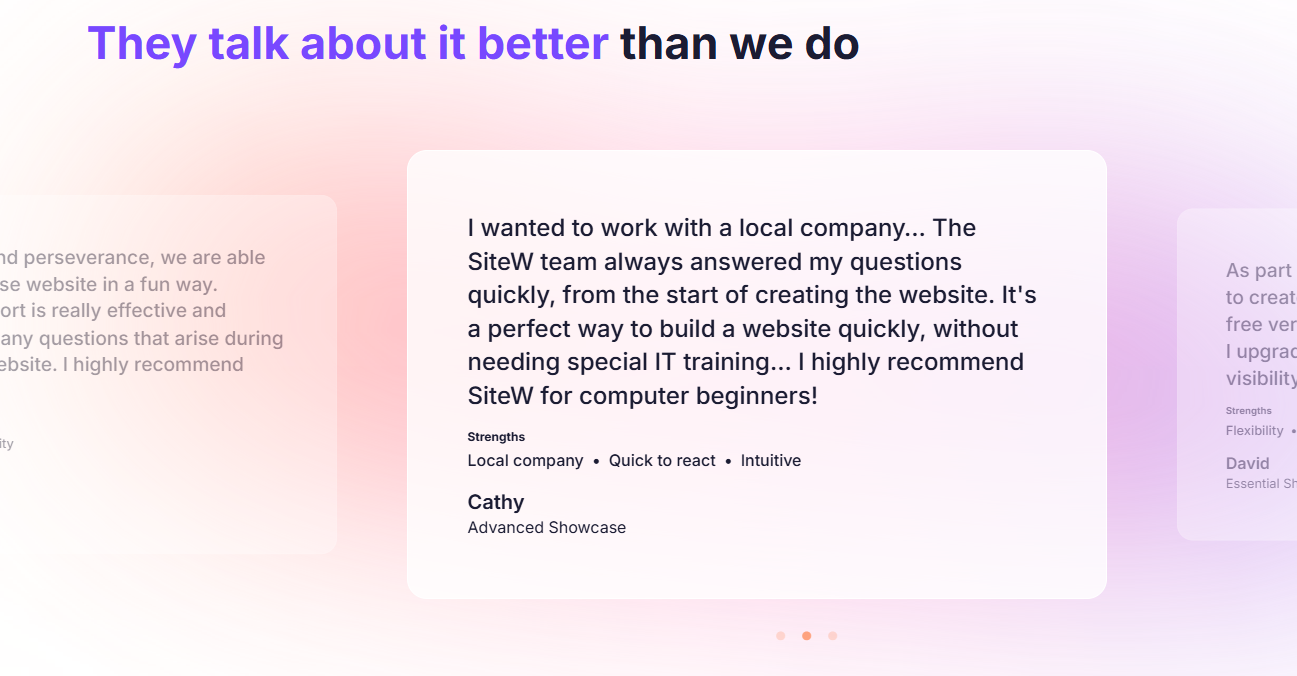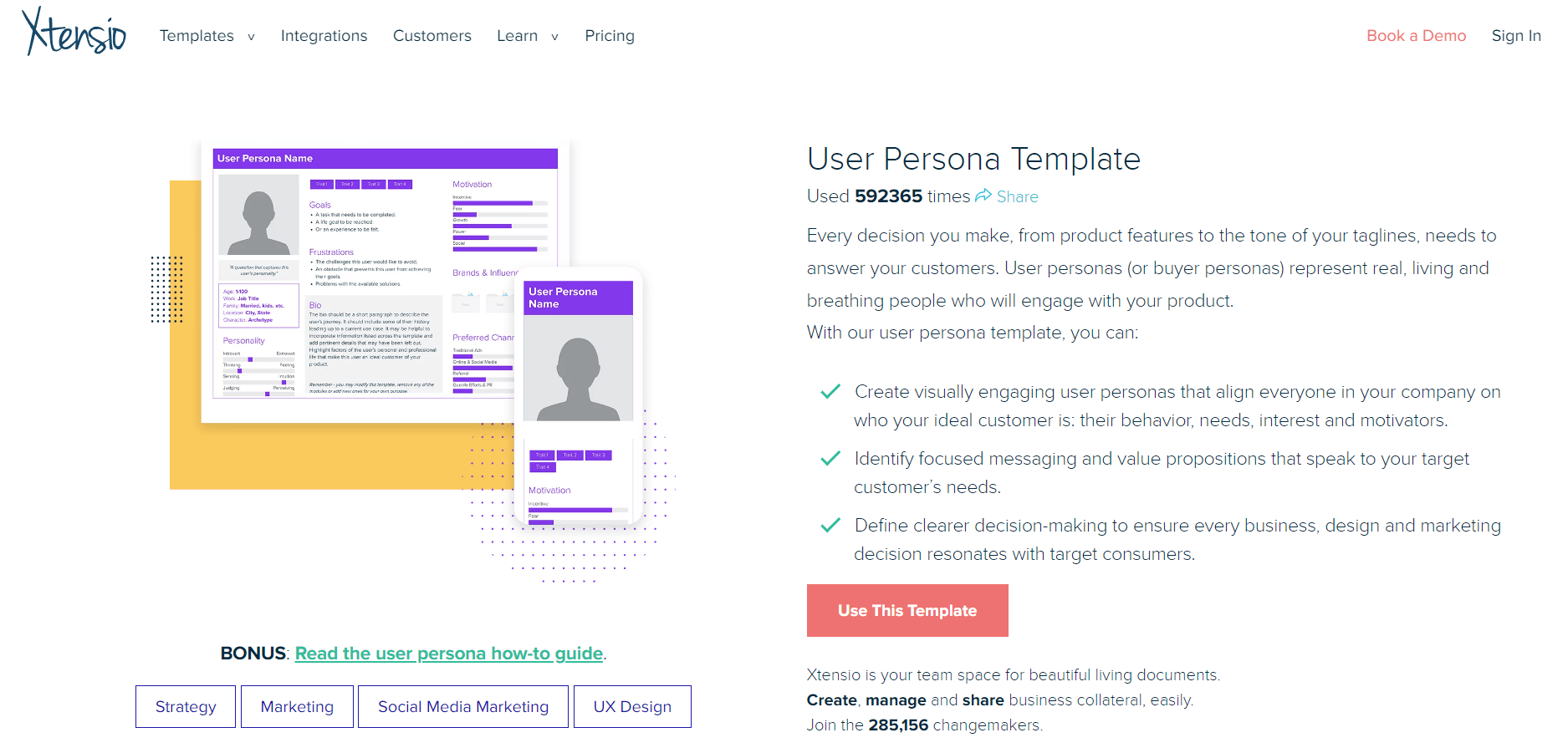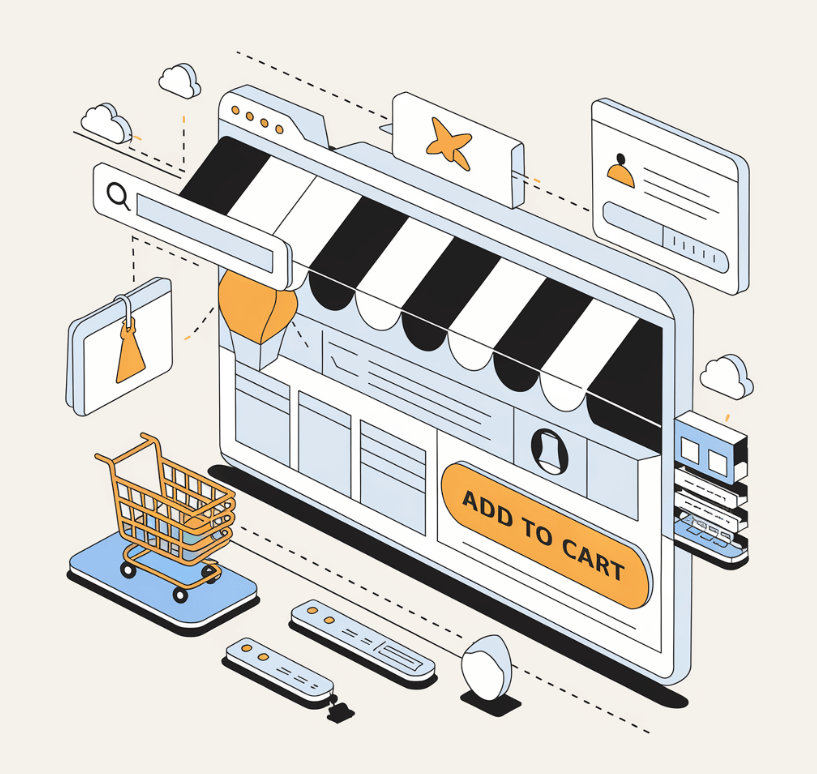What are the purchase journey and the customer's journey?
The purchase journey is the path a customer takes from their first contact with your company to their last.
It's about understanding the interactions between the brand and consumers at the different steps: touchpoints, pain points, key moments, etc.
This journey takes place not only on your website but also across all other channels through which the customer interacts with your company. These channels can include emails, social media, or online ads.
Hey 👋🙂
To
build a professional website that includes the ability to launch
email campaigns or connect your social media profiles... You can use our web design software! It's easy and accessible to everyone - and you can also launch a website up to 5 free pages.
Create a website
⚠️ Don't mix up the purchase journey and the customer's journey.The customer's journey refers to the final part of the purchase journey - that is to say, the interactions a consumer has after they have decided to buy a specific product.

The importance of tracking the purchase journey
Tracking the purchase journey is essential, no matter what your business sector is.
Understanding how your customers go from initial awareness to purchase provides valuable insights that can improve your marketing strategies - and thus support your company's success. 🏆
Here are the advantages that highlight the importance of tracking the purchase journey:
-
Gathering customer insights: Knowing your customers' purchasing behaviour enables you to make informed decisions and better understand their preferences.
-
Optimizing marketing strategies: It's important to know where to focus your attention and allocate your resources. Identifying the most effective channels is essential for saving time and promoting high-performing content.
-
Custom customer experience: Identifying the steps of the buying process enables you to create relevant content and custom interactions (contextual marketing). This strengthens your connection with your audience and increases loyalty.

-
Identifying friction points: By recognizing the obstacles in the purchase journey, you have everything you need to find solutions. This understanding contributes to the overall improvement of the customer experience.
-
Attribution modeling: Understanding how you attribute value to the different touchpoints helps you identify which ones need more attention.
-
Forecasting and planning: Recognizing patterns in user behaviours enables better planning and budgeting. Anticipating future needs on purchase history helps you make proactive, strategic decisions.
-
Customer retention and loyalty: Consumers appreciate the efforts businesses make and more likely engage in loyalty and referral programs.
-
Adapting to new trends: Tracking the purchase journey helps you stay ahead of trends and adjust to market changes. This adaptability makes your brand more informed and agile. 🎯
The different steps of the purchase journey
In general, the purchase journey can be defined in 3 steps: awareness, consideration, and purchase.
1. Awareness
This is when your customer becomes aware of your product. This could be through an advertising banner they saw or a blog article they found while searching for information. It's the first step of tbe purchase process. In marketing, it's called the "first contact point".
This step enables you to attribute your customers to their origin. The way they discovered you helps you identify profitable channels and analyze intent.
2. Consideration
The consideration step refers to when your potential customers ask themselves whether your product suits their needs.
They might book a demonstration, try a product, read your content, watch your videos, and compare your product to those of your competitors.
All these actions are part of the reflection phase. 🧠💭
If you can't track their actions outside your website, you can still monitor and analyze what they do on your web pages. These data provide valuable information about their interests and intentions.
3. Purchase
This is the final action customers take.
This element is essential. The customer may decide to buy after receiving a discount code by email or after seeing a retargeting ad that encouraged them to take action.
Elements that influence the purchase journey
Many key factors influence the decision to buy - and one of them can be the trigger for the final push.
For example, positive influences, such as good advice, can accelerate the purchase process. It's important to identify and analyze these factors to optimize the customer's path to purchase.
Reputation and credibility
It's the first criterion buyers look for.
Customers search for information about your company, check customers' reviews and social proof on platforms like G2, and examine your policies and certifications to understand how you respect regulations and protect their data.
Recommendations and word of mouth
Customers are more likely to buy your products or services if they are recommended or if they hear about you from other people.
Trust and reliability are considered important factors in the decision-making process. As mentioned above, customers go through an in-depth evaluation before making a purchase decision.
Building a positive relationship with people who engage with you on social media can also lead to favourable word-of-mouth recommendations.
Another effective strategy to improve your brand awareness is to present case studies and relevant testimonials throughout the purchase journey. This helps potential customers learn about your company's story and understand how your products or services have benefited others.

Pre-sales and support
Throughout the long and sometimes difficult sales process, customer support is crucial - both before and after the sale.
Strong customer support can have a significant impact on a consumer's decision to choose your product or service over a competitor's.
Providing excellent support at every step of the customer journey helps you build a solid relationship with potential customers, as positive experiences often lead to favourable feedbacks.
Moreover, this can make the purchase process more predictable and help you win customer loyalty more effectively, by consistently meeting their needs.
How to optimize your purchase journey for consumers?
In the past, the customer's journey toward a purchase was simple: consumers had a need to satisfy, considered the potential value of a product to meet that need, decided to buy, and used the item.
However, today's world, shaped by more informed and connected consumers, means that this once-linear purchase journey has evolved into a complex network of interwoven experiences.
Therefore, companies must work smarter than ever to encourage buying decisions. 🤝💵
Here is how to create an effective purchase journey in today's landscape...
Establishing a sales strategy
By identifying your target audience, you will be able to define a convincing sales strategy that captures consumers' attention and influences their purchasing behaviour.
Use specialized tools like Xtensio or SEMrush to help you evaluate different parts of the market and collect valuable quantitative and qualitative data. Then, use this information to guide your marketing decisions.

Focusing on content
As part of your sales strategy, start by selecting channels and customized plateforms aimed at individuals rather than undifferentiated groups.
Studies show that custom content encourages purchases and is often the decisive factor when consumers choose to buy a product.
Define a communication plan with an editorial calendar to create consistent content that reaches consumers at the right time and place. 📅
Among the most effective options: targeted email campaigns, social media ads, blog posts, and online forums.
Create a blog
☝ Use SEO analysis tools to identify and guide traffic toward your online resources. Make sure the information you display and publis is relevant and appropriate.
Evaluate other marketing methods
Think about other ways you promote your brand and determine when, where and how consumers interact with you.
Use the information you collect to create more frequent and valuable engagement opportunities with your audience.
The key to effective marketing isn't just producing informative content - it's also encouraging action that builds lasting relationships with your brand.
With that in mind, review all your practices to ensure you're offering intentional and educational experiences that create meaningful connections with consummers. This will help foster brand loyalty and, in turn, increase your net income. 💲

Analysis and tracking
You must constantly re-evaluate your practices.
Continuous evaluation enables you to stay proactive and keep up with evolving trends, allowing you to anticipate market needs rather than simply respond to them.
It also helps you streamline your marketing efforts and determine where you stand at a given moment, so you can continue to educate, inspire, and influence the consumer's journey effectively.
How to create a cartography of the customer's journey?
The cartography of the customer's journey consists of defining and visualizing these steps:
1. Creating marketing personas
Buyer personas are fictional profiles that represent the different types of potential customers. They help you understand the segments of the public you're targeting.
In general, they include these elements:
- Demographic data
- Socio-economic status
- Personality and habits
- Pain points
- Content preferences
2. Analyzing the users' journey
The user's journey is the path users take through different web pages.
When you know which sites and channels are involved in the buyer's path, you can effectively engage your potential customers through them.
For example, internet users planning to visit London might start with a Google search, then go to a price comparison site, and perhaps end up on the website of an
online travel agency. 💂🇬🇧
3. Researching keywords at each step
Keyword research involves identifying the search terms potential customers use on search engines. This helps you determine how to appear in search results for these terms.
Many professionals focus on buyer-intent keywords (search termss used when users are ready to make a purchase) to generate sales.
However, it's also important to target keywords used in the earlier stages of the journey. This not only maximizes your online presence, but also helps you build trust - which will pay off in the future.
Continuing the example above, users might have started by searching for "cultural holiday destination" in the Google search bar. 🏛️
4. Studying the customer's journey
Nowadays, consumers face more options and channels than ever before, leading to a complex and sometimes disturbing purchase journey.
Help your audience overcome potential analysis paralysis by providing all the necessary information at the right time and place - exactly when and where they're searching.
-
Evaluating customer behaviors and preferences
When used properly, customer data can be extremely valuable. By evaluating how, where, and when buyers interact with your content or products, you can adapt your strategy accordingly - maximizing your sales opportunities.
For example, ask yourself: Are customers more likely to buy when a product page includes enhanced content, such as 360-degree photos, editorial image galleries, videos, or comparison charts? If so, create an action plan to develop these types of content.
-
Stimulating customer engagement at each touchpoint
"Zombie customers" - that it to say, customers who have been inactive for a long time - can pose a serious threat to your business results. Identify where customers tend to abandon their purchase journey, and think about how you can re-engage them at those touchpoints.
This approach might include the following steps:
- Send a follow-up email about an abandoned cart. 📧
- Share a link to reliable third-party information about your brand or product to address any doubts or concerns.
- Offer regular surveys to identify areas where you could improve the purchasing experience.

Customization has progressively become an essential method for success in e-commerce.
A Salsify customer report has shown that a large part of buyers are more likely to buy when product pages include images, videos, texts, relevant and custom text.
-
Optimizing product-related content across all channels and devices
Today, customers expect a consistent brand experience across all touchpoints they interact with during their purchase journey.
-
Checking external touchpoints
From review sites to social channels and online communities, your customers explore your brand and products through various external touchpoints.
Although it can be daunting to know that customers are talking about your company on channels you don't directly control, there are still effective ways to control, engage, and influence those conversations.
For example, if customers ask questions on platforms like Quora or Reddit, you can reply directly with helpful answers and include links to your official channels and resources to provide additional information and build trust.
As a brand, positive or negative feedback can be the most valuable gifts. 🎁
After all, how can you improve if you don't understand the potential shortcomings of your offer and the overall customer experience?
Collect feedback through these methods:
- Send online surveys to customers by email or through an app 📝
- Add comment widgets to your website 💬
-
Call your customers directly to gather insights 🗣️📞
Conclusion on the purchase journey: capture your audience, wherever they are
In an ever-changing omnichannel market, adaptation is the key to success. Customer preferences are constantly evolving, new technologies are regularly introduced, and new players emerge every day.
By understanding what potential customers are searching for and adapting your strategy accordingly, you can attract your audience with appealing content at each touchpoint - helping you fully understand and optimize the purchase journey. 👌







